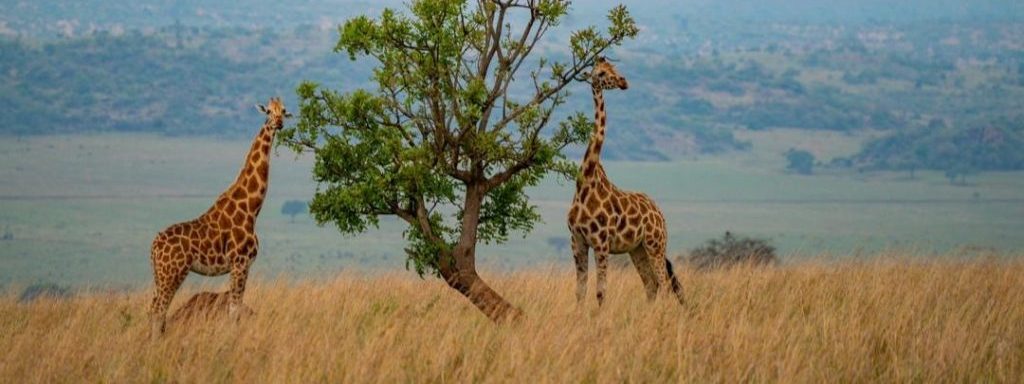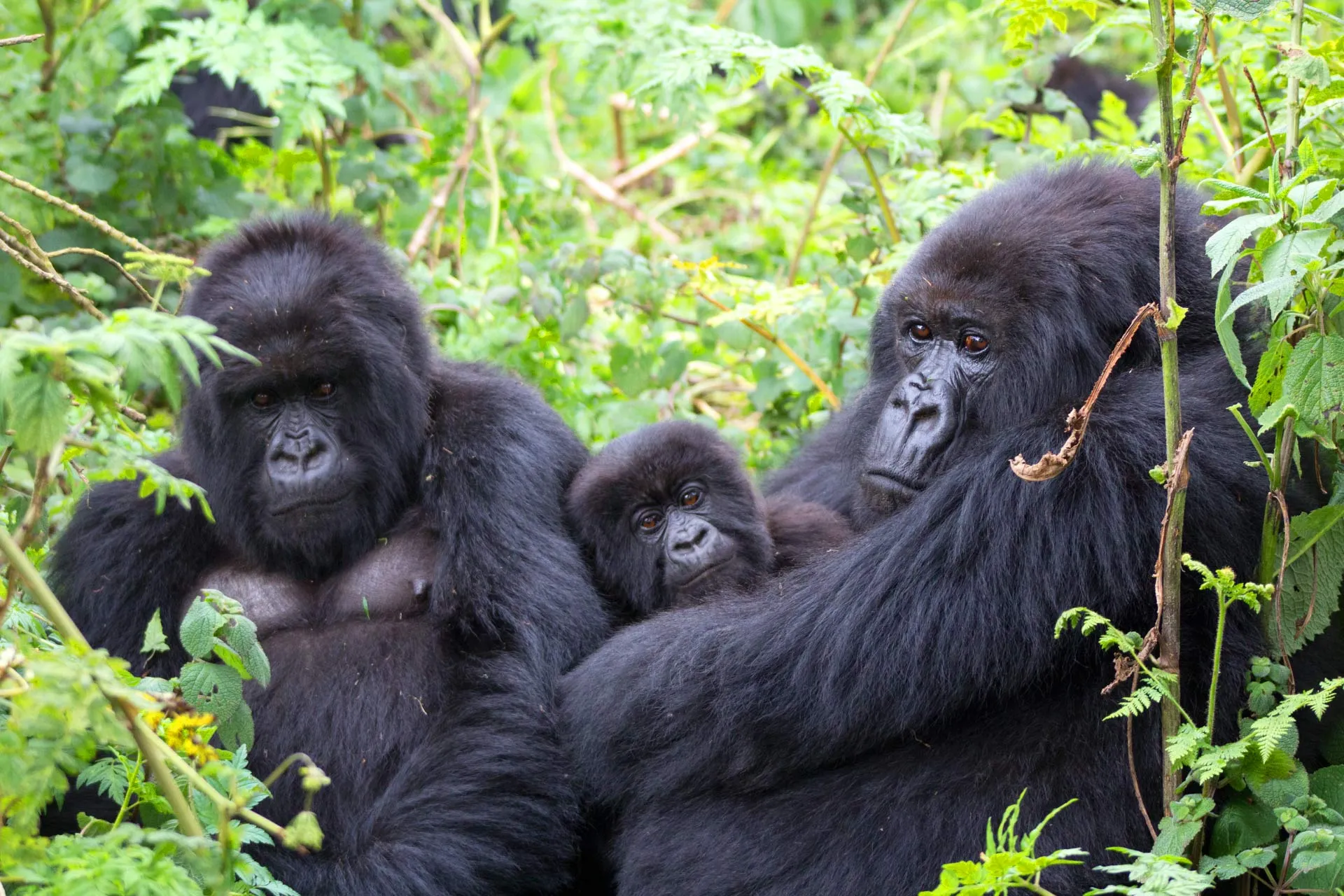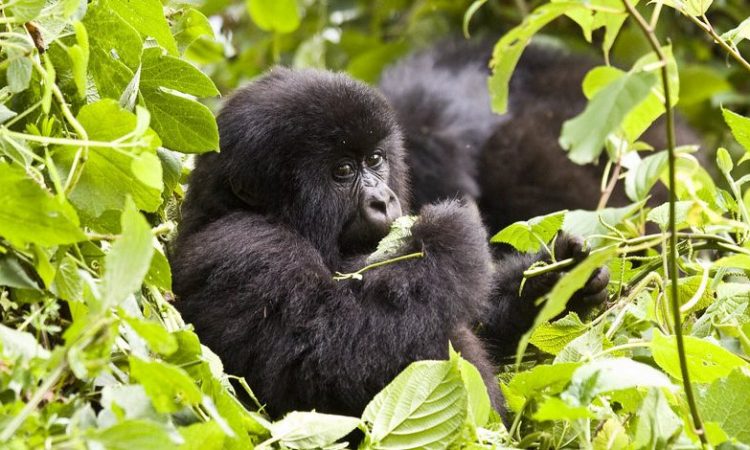
Best time to visit Uganda
Best time to visit Uganda
Best time to visit Uganda : Uganda sits on the Equator and because of its location, its temperatures are consistent through the year. Rainfall is the only thing that separates the seasons, March to May is the long rainy season and October to November is the short rainy season.
Uganda can be visited year – round.
Temperatures in Uganda are very consistent throughout the year and the major factor that determines the temperatures is the altitude, warm days in the lowlands sit between 25 – 30 °C with highland areas averaging 15-20 °C. Early mornings, evenings and asnights in the highlands can get quite cold and since Uganda lies on the Equator, you should be ready for showers no matter when you are travelling.
When is the best time to visit Uganda?
Uganda in January
January is the driest month of the year in Uganda, the roads leading to safari destinations and trails are dry and the skies are blue, this is one of the best months to visit Uganda for trekking and outdoor activities such as game drives, boat cruise and photographs. Since Uganda lies on the Equator, the risk of sudden downpours is unavoidable but these are exceptions rather than the norm.
Wildlife viewing in January is particularly good at this time of the year as there is less vegetation cover to obstruct your view, conditions are also perfect for gorilla trekking in Bwindi impenetrable National Park and Mgahinga Gorilla National Park and chimpanzee trekking in Kibale Forest National Park.
Uganda in February
The dry season continues into February with average temperatures around 25 °C making the month of the most of the hottest months of the year, the scotching sun and the reduction in rainfall attracts the wildlife from their hiding to the remaining watering holes making February to be the best time for game viewing in Uganda.
February receives fewer tourists compared to December and January, because of this the hotel and lodge rates can be lower. However you are advised in book in advance most especially if you are intending to do gorilla trekking and chimpanzee trekking during your Uganda safari visit.
Uganda in March
March marks the start of the long rainy season in Uganda that last till May, in this month downpours can be heavy and persistent, although often occurs in late afternoons or overnight.
This month is still a perfect time to enjoy all that Uganda has to offer including tracking mountain gorillas, game viewing and chimpanzee trekking, but the roads become challenging, trails get slippery and the skies overcast with pockets of sunshine illuminating the wilderness throughout the year.
If you are visiting Uganda in March, remember to carry waterproof clothings and good quality trekking boot.
In this month, the gorillas often head to the lower and warmer ground which can make sightings easier.
Uganda in April
April is the peak of the rainy season and receives the worst of the rain, because of the too much rain some accommodations get closed and road in the parks may be impassable. However this is still one of the most beautiful times to visit as the vegetation bloom and the mountain gorillas linger on the warmer lower slopes of the mountains, this means that while the trekking routes are muddier, they are typically shorter.
In April, average day time temperatures peak around 26 Celsius and rises as the month progress.
If you want to escape on the Uganda safari visit in April, Murchison Falls National Park situated further Norther has a drier climate than the South-west.
Another advantage of visiting in April is the low rates for hotels and lodges.
Uganda in May
May is the final month of the long rainy season, the conditions begin to let up towards the end of the month but you should still expect heavy rains and tougher roads and treks.
In May, days are warm, wet with the rains broken periodically by periods of sunshine, average day time temperatures are around 22 degrees Celsius. Frequent downpours can alter your safari plans last minutes.
Remember to carry waterproofs and good outdoor boots.
In month, sightings of gorillas are common as they migrate to the warmer lower slopes of the mountains, this makes gorilla treks much shorter however the rains can make some routes impassable. Migratory birds continue migrating across Africa including Uganda from European countries thus making May a great time to visit for birders.
Because of the bad weather, most of the accommodation properties remain closed and the ones available are relatively at low rates.
In May, Kibale National Park is a good place to visit in May as the Chimpanzee populations are most active around this time.
Uganda in June
June marks the start of the peak season in Uganda and is an excellent time to visit, the rains have passed but their impact can be clearly seen from the outstanding color of the forests, skies are blue and the trekking routes have dried.
Peak season means that gorilla permits and chimpanzee permits get booked up quickly, if you want to travel in this month, you need to book in advance.
Temperatures in June are around 27 degrees Celsius and the retreating vegetation is likely to obstruct your view of the wildlife.
Mountain gorilla retreat back up to their mountain top forests meaning gorilla trekking generally takes longer in this month but the routes are less bogged down and muddy. The lack of rain means the ground is dry and easier to traverse making longer treks much more enjoyable.
Uganda in July
The dry season continues and temperatures are cooler across the country in July which is considered to be the driest month in Uganda although you should be prepared for some showers at any time.
Temperatures are warm and rainfall is minimal meaning all activities are possible, hiking routes are accessible and lodges, average day time temperatures sit around 25 degrees Celsius.
July is one of the best months for safari and gorilla trekking in Mgahinga gorilla national park and Bwindi impenetrable National Park. In wildlife national parks animals congregate around the diminishing water sources making them easier to spot.
By July, mountain gorillas have retreated from the lowland forest back up their misty mountain – top fortresses, this month offers the perfect hiking conditions meaning the longer treks are still manageable. If you are planning to visit Uganda in July, you will need to book in advance as there is high competition of permits and lodges.
Uganda in August
August is the final month of the dry season with conditions across the country remaining perfect, rainfall is similar to that of early June as the country’s short rainy season approaches. Skies are blue and the access routes are easy to traverse.
Uganda is a very good month to visit Uganda, wildlife congregates around the few remaining watering holes meaning sightings are common. Some of the most active animals around this time includes elephants, lions and the elusive leopards.
Average temperature of 25 degrees Celsius
Uganda in September
In September, rains are a little more frequent than in the drier June to August but not compared to the long rainy season earlier in the year. Roads are clear and trekking route are not too slippery.
The rains in this month aren’t enough for the vegetation to blossom like it does during wetter months and so they head for the waterholes which makes sightings easier and more frequent.
September receives an average day time temperature of 27 degrees Celsius, the first half of the month sees less rainfall but it builds as you head further towards October.
Uganda in October
October marks the end of the peak season in Uganda and the rain begins to pick up but it is still much drier than the long rainy season from March to May. Despite the rains, there is still plenty of wildlife, also the gorillas in Bwindi forest descend to the lower- lying slopes of the mountains in search of more tepid climates, this makes the gorilla trek much shorter and easier to navigate.
October has an average daily temperature of around 25 degrees Celsius, temperatures remain warm and most of the national parks in Uganda are open.
Uganda in November
November is the second rainy season in Uganda, the rains are less dramatic than those of March to April but they are severe enough for roads to become tough to traverse and trekking a challenge.
Some lodges will close most especially those situated in the worst affected regions.
It is still okay to travel in November but you have to be prepared for showers and greyer skies, the forests re beautiful, savannah grasslands turn from brown to green and migratory birds flock into Uganda.
November is a shoulder season in Uganda, prices may be lower in this period, gorilla trekking is difficult as the routes are muddy and roads are sometimes impassable.
Uganda in December
December is the start of the dry season that lasts until February, December is particularly busy time to travel to Uganda as families are on holidays and international tourists arrive in Uganda for safaris in celebrations for Christmas and New Year.
Visitors planning to visit Uganda in December, need to book well in advance. .
In conclusion, the best time to visit Uganda is during the two dry seasons that is between December and February and between June and August. In these periods the conditions are particularly good for trekking to see mountain gorillas and chimpanzees, game spotting in national parks is also great. February and March is a good time to visit Uganda.







